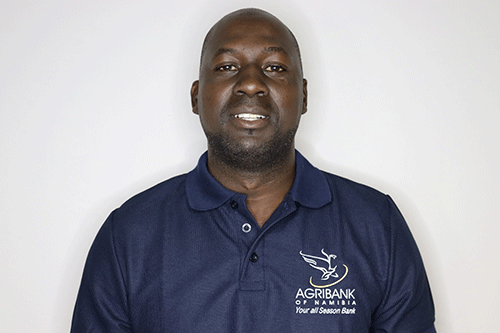The agricultural sector is fundamental to the sustenance of livelihoods in Namibia. However, it faces several challenges associated with climate change.
The effects of climate change are evident, as Namibian farmers have endured recurring unfavourable rainfall seasons that present distinct conditions or events such as floods, droughts, pests, and disease outbreaks, amongst others.
Drought conditions are recurrent and emerge every second year or season, with varying severity across the country. These conditions have been devastating to both crop and livestock farmers, and their livelihoods have been robbing them of optimal productivity and income due to poor yields, poor livestock performance, and unfavourable market prices, amongst others.
To this end, farmers need to re-assess their farm business annually or more regularly and develop plans and strategies that will help them withstand the recurrent harsh drought conditions.
There is no standard recipe for managing drought. However, one would need to adjust and adapt to the phenomenon’s changing conditions.
Thus, farm-self assessments should look at the availability of forage (grazing), water, fodder, and financial resources with consideration of rainfall activities to make informed and timely decisions.
Farm management
As part of farm management planning, drought management should be one of the critical components. Drought planning should be an ongoing process to ensure that responsive measures are implemented at any stage before, during, and after a drought.
It is advisable that decisions or strategies adopted strive to be economical and sustainable. This may not be easy given other prevailing conditions, such as low livestock prices and high costs of livestock feed.
However, farmers should not delay their decisions and actions. Lessons learned show that farmers wait and hope that the rainfall and livestock prices will improve to the detriment of livestock conditions and end up selling at unfavourable prices.
Therefore, a drought preparedness plan will help farmers minimise the impact of drought on their farming businesses, but the effectiveness of a drought plan depends on the time it is implemented. The preparatory assessment and strategies entail establishing and responding timely to early warning systems at local, farm, and national levels.
For example, recording and monitoring local rainfall figures, establishing trends in rainfall patterns over time, and linking them to rangeland status and other environmental conditions. This will help in making predictions, conclusions, and decisions for the purpose of timely implementation of strategies.
Finances and costs
Moreover, one needs to assess their finances in relation to the costs associated with drought, for example, feeding, relocating (or leasing), and selling livestock. The assessment should consider the amount (budget) and the source of funding, either from own savings, farm product sales, grants, subsidies, or loans, amongst others.
In terms of strategic livestock management, the plan should ensure that animals are segregated or managed as per their different categories and specific requirements. For example, lactating cows and dry cows do not have the same feeding needs. Thus, their management, type of feed, and associated costs will differ.
Farmers need to take note that feed supplements can be formulated for either production or maintenance purposes. The production supplements target the improvement of attributes such as milk yield or fattening, whereas the maintenance supplements aim at meeting the animal’s daily nutritional needs for normal body functions and survival.
A farmer should have a “Farm Fodder Flow Plan” that will consider the source of feeds; these can be fodder produced or sourced from farm resources, for example, cultivated pastures, crop residues, and harvested forage materials.
One of the best approaches to cutting feeding costs on the farm is to produce your fodder or source cheap feedstuffs that one can add value to through processing, for example, by milling and combining nutritional additives or feed ingredients such as molasses.
Apart from processed feedstuffs, farmers should also regularly assess the grazing conditions to establish if there are sufficient grazing materials to sustain their animals during difficult times.
This brings in the concept of farm carrying capacity or stocking rate, particularly on commercial or fenced-off farmlands, where livestock numbers on the farm may have to be timely adjusted to the quantified forage available to avoid overgrazing.
In addition, a sustainable water management plan is also key to minimising the impact of drought on farmlands. The plan needs to consider sustainable water (rain and underground) harvesting and utilisation through the development of catchment areas or appropriate harvesting techniques, storage and sustainable use.
Planning ahead
Furthermore, planning should also include a drought recovery plan where farm productivity must recover to its previous or optimal potential given the prevailing conditions (rainfall, grazing, and water). These can be at farm and national levels, for example, livestock restocking plans, financial recovery plans, or national agricultural recovery and sustainability plans in general.
In conclusion, planning for drought preparedness can minimise the impact of drought to some extent on the farm business, but the effectiveness of the plan depends on the time it is implemented.
In general, there is a huge cost burden on livestock farmers in Namibia because of the degraded rangelands and water scarcity, which are exacerbated by climatic events such as drought and high temperatures. Therefore, emphasis should be placed on integrated rangeland and water management systems to harmonise the use of the two resources.
This requires all relevant stakeholders to play a role in protecting the agriculture sector for the purposes of food security, food self-sufficiency, economic advancement and sustainable livelihoods.
*Erastus Ngaruka is Agribank’s technical advisor on livestock and rangeland.


